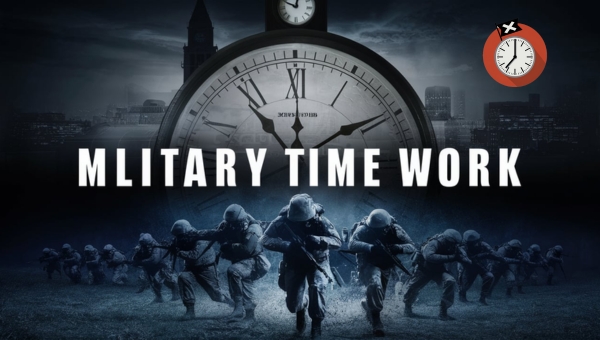
Have you ever needed to grasp the concept of military time swiftly? Or perhaps you've been puzzled about what it is and why it exists? Welcome to the ultimate web resource on the 24-hour clock system! This guide provides you with comprehensive insights into everything you might want to know about military time, along with handy tips for reading it without confusion.
Military time operates on a 24-hour cycle, where each day starts at midnight and ends at the next midnight, divided into 24 distinct hours. This method of timekeeping is widely recognized and utilized around the globe, particularly in various professional fields.
Here is a detailed chart comparing 12-hour clock times with their equivalents in military time. This table can serve both as a reference and a conversion tool for those familiarizing themselves with the system.
| 12-Hour Format | 24-Hour Format |
|---|---|
| 12:00 AM | 00:00 |
| 1:00 AM | 01:00 |
| 2:00 AM | 02:00 |
| 3:00 AM | 03:00 |
| 4:00 AM | 04:00 |
| 5:00 AM | 05:00 |
| 6:00 AM | 06:00 |
| 7:00 AM | 07:00 |
| 8:00 AM | 08:00 |
| 9:00 AM | 09:00 |
| 10:00 AM | 10:00 |
| 11:00 AM | 11:00 |
| 12:00 PM | 12:00 |
| 1:00 PM | 13:00 |
| 2:00 PM | 14:00 |
| 3:00 PM | 15:00 |
| 4:00 PM | 16:00 |
| 5:00 PM | 17:00 |
| 6:00 PM | 18:00 |
| 7:00 PM | 19:00 |
| 8:00 PM | 20:00 |
| 9:00 PM | 21:00 |
| 10:00 PM | 22:00 |
| 11:00 PM | 23:00 |
| 12:00 AM | 24:00 |
In military timekeeping, the new day begins precisely at 00:00, which is midnight. The last minute of the day is noted as 23:59, just before the next cycle begins. Occasionally, you might see midnight represented as 24:00, both formats being valid.
For instance, converting the hours from a traditional time schedule to military time could initially seem challenging. 4:00 pm to midnight would span from 16:00 to 24:00 in military notation. Another example worth noting is how 10:15 AM remains 10:15 when switched over, but 2:30 PM transforms into 14:30.
To help you smoothly convert civilian time to military time, remember two main points:
Widely adopted by the armed forces, military time also finds applications within government sectors, public transportation systems, hospitals, emergency services, meteorological studies, astronomical observations, and high-precision computing environments. In verbal communication, military time such as 07:00 is often pronounced as "zero seven hundred hours." Interestingly, in written form, particularly within military contexts, time stamps frequently omit the colon, showing 0752 instead of 07:52.
Moreover, time expressions corresponding to Greenwich Mean Time (GMT) or Coordinated Universal Time (UTC) are indicated with a "Z" suffix, for example, 0752Z. Local times might have different denotations, such as "J" for local time and "R" for the eastern time zone, with each zone possessing a specific identifier and designation.
Here's another look at how military time correlates to civilian time:
| Military = Civilian | Military = Civilian |
|---|---|
| 0001 = 12:01 am | 1300 = 1:00 pm |
| 0100 = 1:00 am | 1400 = 2:00 pm |
| 0200 = 2:00 am | 1500 = 3:00 pm |
| 0300 = 3:00 am | 1600 = 4:00 pm |
| 0400 = 4:00 am | 1700 = 5:00 pm |
| 0500 = 5:00 am | 1800 = 6:00 pm |
| 0600 = 6:00 am | 1900 = 7:00 pm |
| 0700 = 7:00 am | 2000 = 8:00 pm |
| 0800 = 8:00 am | 2100 = 9:00 pm |
| 0900 = 9:00 am | 2200 = 10:00 pm |
| 1000 = 10:00 am | 2300 = 11:00 pm |
| 1100 = 11:00 am | 2400 = 12 Midnight |
| 1200 = Noon |
For more intriguing timekeeping systems, explore our articles on the lunar calendar, the Mayan Calendar, the Chinese Calendar, the Gregorian Calendar, and the fascinating topic of Sundials.